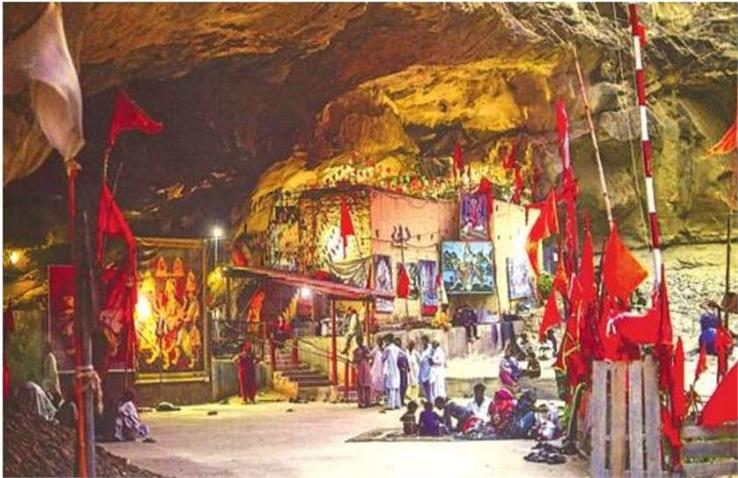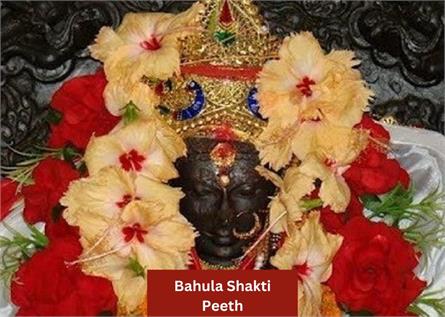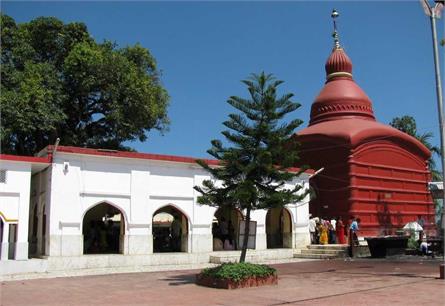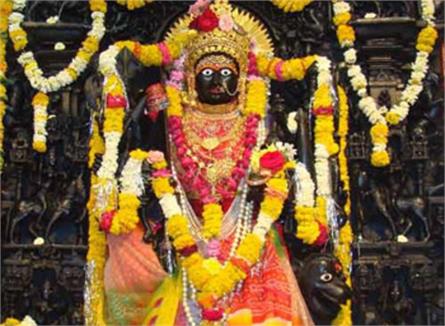Hinglaj Mata Mandir - What is the belief here & Temple timings
Hinglaj Shakti Peeth is the most famous and significant pilgrimage amongst the devotees according to their religious beliefs. It has also been mentioned in Hinglaj Purana as well as Vamana and many Puranas.
Now here is an interesting fact. We all know that Pakistan was a part of India before independence. Hence, Hinglaj is one of the two Shaktipeeths that is across the border of India & situated in Pakistan. This sacred Shaktipeeth is located in the Hinglaj area on the Hingol River banks in the Balochistan area of Pakistan, which is 217 kilometers away from Karachi. Most of the journey has to be done through the desert, which is extremely difficult.
History
According to the legends, when Lord Shiva started doing 'Tandava' with the dead body of Goddess Sati on his shoulder, Lord Vishnu cut the dead body into 51 parts with his Sudarshan Chakra to save the universe from the Holocaust. It is believed that Hinglaj is the place where the head of the Goddess fell.
Another belief associated with this temple is prevalent. Which is Lord Hinglaj's head came down. Bhagwati's hair parting was adorned with kumkum (hinglu). Hence it is called Hinglaj/Hingula Shakti Peeth.
Also Read: The Divine Power of 12 Jyotirlinga
Location
Hinglaj is the only Shaktipeeth that is across the border of India & situated in Pakistan. This sacred Shaktipeeth is located in the Hinglaj area on the banks of the Hingol River in the Balochistan area of Pakistan, which is 217 kilometers away from Karachi. Most of the journey has to be done through the desert, which is extremely difficult.
Light sight
In this Shaktipeeth, there are visions of Shakti Roop Jyotis. The cave has to go on the strength of hands and feet. Muslims call Hingula Devi as 'Nani Mandir' and visit there as 'Nani Ka Haj.' Muslims from all over Balochistan also worship the Hinglaj Shakti Peeth.
'Hingula' means vermilion. It is said that when 'Bhagwan Parashurama' came after killing the Kshatriyas 21 times, the remaining Rajaghans went to the shelter of Mother Hingula and pleaded for their protection. Then the mother called him 'Brahmakshatriya.'
It is believed that there are Kamakhya of Assam, Kanyakumari and Tamil Nadu, Kamakshi of Kanchi, Ambaji of Gujarat, Lalita of Prayag, Vindhyavasini of Vindhyachal, Volcano of Kangra, Vishalakshi of Varanasi, Mangaladevi of Gaya, Sundari of Bengal, Guhyeshwari of Nepal and Malwa In these two forms, Adyashakti is embellishing as Hingla Devi.
Also Read: Kedarnath Temple
Religious festival
There is a religious festival held in April every year, in which people come from remote areas, especially Hindus. Passport and visa are necessary for Hingula Devi's visit.
Goddess's Chul
It is said and believed that once here Goddess appeared and gave a boon that every wish of the devotee who runs my Chul will be fulfilled. Chul is a kind of coral enclosure that is made 10 feet long outside the temple and is filled with blazing embers on which the eunuchs walk to the temple, and it is a miracle of the mother that the panchdhari Goes through only a little pain. There is no harm to the body, but your vow is definitely completed, and your wish gets fulfilled. However, this is not the tradition anymore.
Mythological facts
According to the legend, when Lord Shankar started doing the Tandava with the dead body of Mother Sati on his shoulder, Lord Vishnu cut the dead body of the mother into 51 parts with his Sudarshan Chakra to save the universe from the Holocaust. It is believed that Hinglaj is the place where the head of the mother fell. Another belief associated with this temple is prevalent. It is said that every night, all the powers assemble at this place and create a rasa, and in the daytime, Hinglaj merges within the mother.
Also Read: Shikari Devi Temple
Many great people have looked at the forehead here.
Janushruti is that the Maryada Purushottam Lord Sri Rama also came, proven back for the journey. According to Hindu religious texts, Lord Parshuram's father, Maharishi Jamadagri, had done austerities here. A place named Asaram named after him still exists here. It is said that great spiritual saints like Guru Gorakhnath, Guru Nanak Dev, Dada Makhan have come to worship the mother in this famous temple.
Nature of the temple
The temple here is a cave temple. Mata's Deity form sits in a cave which is built on a high hill. There is a temple of Mata Hinglaj Devi in the mountain cave with no door. The orbiters of the temple enter through one of the caves and leave the other side. Along with the temple are the glasses of Guru Gorakhnath. It is believed that Mata Hinglaj Devi comes here to bathe in the morning.
Here Mata Sati is revered as Kotari while Lord Bholenath Bhimalochan is Bhairava. In the Mata Hinglaj temple's premises, besides the statue of Sriganesh, Kalika Mata, there are famous pilgrimages like Brahmakund and Tirunkund. This Adi Shakti is worshiped only by Hindus, and Muslims are also highly respected by them. To enter the Hinglaj temple, one has to climb the stone steps. The temple first has a darshan of Shri Ganesha, who gives siddhis. In front, there is a statue of Goddess Hinglaj Devi, who is in the form of 'Mata Vaishno Devi'.
Also Read: Parashar Temple History
Commencement of the journey
The journey to Hinglaj starts from Karachi. About 10 kilometers from Karachi is the Howe River. In fact, the main journey takes place from the howe river. Before going to Hinglaj, one has to visit the idol of Goddess in Lasbela. This philosophy is given by 'stickar' (priest). From there, he goes to Shiv Kund (Chandrakup), where he declares his sin and offers coconut. The coconut and offers are accepted by those whose sins have been redeemed, and the court has given permission, or else the coconut will be returned back.
Chandrakup
Hinglaj is also known as the 'fiery Shaktipeeth Tirtha', because before going there, the worshipper has to give a detailed account of his secret sins on the fire-breathing moon, and also pledges not to repeat it in future. Those who hide their sins do not get orders and leave them there only, and the other passengers proceed. After this, the order of the Chandrakup Darbar is received. Chandrakup is a high mountain rising amid the Tirtha Hills. Huge bubbles keep rising there. The fire is not visible, but inside it is a boiling, steam-burning volcano.
How to visit the temple of Mata Hinglaj
There are two routes to visit this Siddha Peetha - one hill and the other dessert. The passenger group walks from Karachi to Lusbela and then to Lairi. The "Howe" river runs six-seven miles from Karachi. This is where the journey of Hinglaj begins. It is here that the swearing process is completed; it is here that the renunciation is taken for a period until it returns. It is here that the stick is worshiped, and it is here that after resting in the night, the journey to Marutirtha is started by chanting "Hinglaj Mata" in the morning.
Many rainy sewers and wells are also found on the way. Next to it is a dry rainy river of sand. The largest river in this area is Hingol, close to which are the Chandrakup mountains. There is a distance of about 15 miles between Chandrakup and the Hingol river. In Hingol, the devotees worship on their heads by getting their haircut and wearing Yagnopavit. They then express their reverence by singing the song.
One has to walk from here to visit the temple as there is no road ahead so that one can travel by truck or jeep. Travelers walk from the banks of the Hingol River to sing Mata Hinglaj Devi. Beyond this comes a place called Ashapura, where the travelers rest. After changing the clothes, bathing, and wearing clean clothes, the old clothes are handed over to the poor and needy. A little ahead of this is the temple of Kali Mata. After worshiping in this temple, the passengers leave for Hinglaj Devi. Travelers climb the mountain where there are three wells of freshwater. The holy water of these wells purifies the mind and frees the worshippers from sins.
Passengers rest at the last stop of the mother's cave. The next day, before sunrise, they take a bath in the Aghor river, worship material, and go for darshan. There is a mother's cave on the hill across the river. Near the cave is a palace of Goddess Hinglaj, a specimen of superhuman craftsmanship, believed to be built by yagyas. An absolutely mysterious city that appears to have been built by melting a mountain. No wind, no light, but colorful stones hang. The floors there are also colorful—Sandy trail between two hills. You will find palm trees somewhere; then somewhere there is a fountain of water among the bushes. Goddess's cave is beyond it all. Devotees reach there with the undeserved kindness of Mother. After climbing a few steps, the entrance to the cave comes and burns on the altar at the end of the giant cave. Seeing Pindi there, you will surely remember and relate it to 'Vaishno Devi.' The walls on the two sides of the cave have been given a protected form. Outside the mother's cave, the figures of the sun and the moon are inscribed on a huge rock. It is said that these figures were written by Rama himself after the sacrifice.













